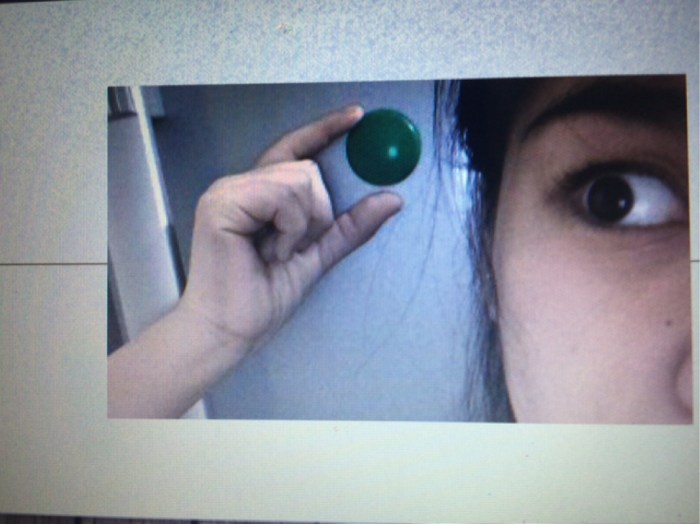How to be open minded? This journey explores the fascinating world of open-mindedness, delving into its essence and practical application. We’ll uncover the traits of open-minded individuals, and discover strategies to cultivate this crucial mindset. Prepare to challenge your assumptions and embrace new perspectives!
From understanding the core principles of open-mindedness to overcoming potential barriers, this guide provides actionable steps to develop a more receptive and adaptable way of thinking. We’ll examine how open-mindedness impacts various aspects of life, from personal relationships to professional settings, and even societal progress.
Understanding Open-Mindedness

Open-mindedness is a crucial skill for navigating the complexities of the modern world. It allows us to consider diverse perspectives, adapt to new information, and foster meaningful connections with others. This quality transcends mere tolerance; it involves a proactive willingness to embrace unfamiliar ideas and challenge preconceived notions. It is not simply a passive acceptance of everything, but a dynamic engagement with the world around us.Open-mindedness is often confused with agreeableness.
While related, they are distinct concepts. Agreeableness implies a tendency to comply with others’ opinions, even if one doesn’t fully understand or agree with them. Open-mindedness, however, encourages a deeper exploration of those differing viewpoints, actively seeking to understand the reasoning behind them, even if it challenges one’s own beliefs.
Defining Open-Mindedness
Open-mindedness can be defined as the capacity to consider different viewpoints without prejudice, actively seeking to understand perspectives that differ from one’s own. It involves a willingness to evaluate information objectively, even when it contradicts existing beliefs. This active engagement allows for growth and learning.
Being open-minded means stepping outside your comfort zone and considering different perspectives. Sometimes, that means recognizing when you’re pushing yourself too hard, and your work is negatively impacting your well-being. Check out this insightful article on 10 signs you’re sacrificing your health for your work and it’s not worth it to see if you’re guilty of prioritizing work over your own well-being.
Ultimately, open-mindedness also means being willing to adapt and learn from those experiences, leading to a healthier, more balanced life.
Distinguishing Open-Mindedness from Agreeableness
Open-mindedness is not about passively accepting everything presented to you; it’s about critically evaluating and understanding different perspectives. Agreeableness, on the other hand, often involves complying with others’ opinions without necessarily understanding their basis. An agreeable person might avoid conflict, but not necessarily engage in a thoughtful exploration of the issue at hand.
Characteristics of an Open-Minded Person
An open-minded person exhibits several key characteristics. They are curious and eager to learn, actively seeking out diverse viewpoints. They are willing to consider alternative explanations, even if they initially seem contradictory to their own beliefs. They are able to tolerate ambiguity and uncertainty, recognizing that not all questions have immediate answers. They are also adept at communicating their own ideas clearly and respectfully, while actively listening to and understanding others.
Examples of Open-Minded Behavior
Open-mindedness manifests in various ways across different contexts. In a political debate, an open-minded participant would listen attentively to opposing arguments, seeking to understand the underlying motivations and values driving them, rather than simply dismissing them. In a scientific discussion, an open-minded researcher would acknowledge the limitations of their current understanding and welcome new data that challenges established theories.
In interpersonal relationships, an open-minded individual would actively strive to understand their partner’s perspective, even if it differs significantly from their own.
Embracing different perspectives is key to being open-minded. Stepping outside your comfort zone and seeking out diverse viewpoints is crucial. Reading can be a fantastic way to do this, and 10 novels that will help you perform better this business world offer a unique opportunity to explore various characters, situations, and ultimately, broaden your understanding of the world.
Ultimately, opening yourself up to new ideas, whether through books or other experiences, helps foster that all-important open-mindedness.
Comparing Open-Mindedness to Rigidity and Prejudice
Open-mindedness stands in stark contrast to rigidity and prejudice. Rigid individuals tend to cling to their beliefs without considering alternative viewpoints, often dismissing or ignoring contradictory evidence. Prejudice, on the other hand, involves making assumptions or judgments about others based on stereotypes or biases, rather than on a thoughtful consideration of individual characteristics. Open-mindedness actively avoids both of these tendencies.
Open-Mindedness: Aspects, Examples, Implications, and Pitfalls
| Definition | Examples | Implications | Potential Pitfalls |
|---|---|---|---|
| The capacity to consider different viewpoints without prejudice, actively seeking to understand perspectives that differ from one’s own. | Actively listening to opposing viewpoints in a debate; acknowledging the limitations of one’s own knowledge; seeking out diverse perspectives in research; adapting to new information. | Increased understanding and empathy; improved problem-solving; enhanced decision-making; greater adaptability; fostering collaboration and trust. | Possibility of being overly susceptible to misinformation or manipulation; difficulty in making decisive choices; potential for compromising core values or beliefs. |
Cultivating Open-Mindedness: How To Be Open Minded

Embracing open-mindedness is not a passive state; it’s an active process of growth and development. It requires conscious effort to step outside our comfort zones and engage with perspectives that differ from our own. This exploration fosters a richer understanding of the world and ourselves. Cultivating open-mindedness is a journey, not a destination.Cultivating an open mind involves actively seeking out and engaging with diverse viewpoints.
This approach fosters intellectual agility and encourages a more nuanced understanding of complex issues. It’s about recognizing that there’s more than one way to perceive the world and that different perspectives can contribute to a more complete picture.
Embracing new ideas is key to being open-minded. It’s about stepping outside your comfort zone and exploring different perspectives, like listening to music from different cultures. Did you know that classical music, specifically Mozart’s compositions, might have some surprising health benefits? Research suggests that listening to mozart medicine the health benefits music can improve focus and even boost your mood.
Ultimately, openness to new experiences, like exploring different genres of music, is a powerful way to expand your horizons and become more open-minded.
Methods for Cultivating an Open Mind
Developing an open mind requires consistent effort and a willingness to learn from others. This involves a conscious decision to approach situations with curiosity and a willingness to be challenged. Methods for cultivating open-mindedness are not rigid prescriptions but rather tools and strategies that can be adapted and combined to suit individual needs.
- Embrace Curiosity: Curiosity is the engine of open-mindedness. It fuels the desire to explore new ideas and perspectives, leading to a deeper understanding of the world. Asking “why” and “how” is fundamental to intellectual growth. Curiosity encourages investigation, challenging assumptions, and seeking out knowledge.
- Actively Seek Diverse Perspectives: One of the most effective ways to cultivate open-mindedness is to actively seek out diverse perspectives. This can involve reading books by authors with different backgrounds, attending events with people from varied walks of life, or engaging in conversations with people who hold opposing views. This conscious effort to encounter diverse viewpoints helps broaden one’s understanding.
- Engage in Constructive Dialogue: Constructive dialogue is crucial for navigating differing viewpoints. It involves listening actively and empathetically to understand the other person’s perspective, even if it differs from your own. Avoid interrupting, and focus on understanding the reasoning behind the other person’s viewpoint. Respectful communication is key to fostering understanding.
- Challenge Preconceived Notions: Preconceived notions are often deeply ingrained and can hinder open-mindedness. Actively questioning these assumptions is essential. Consider the source of these beliefs and examine whether they are based on factual evidence or personal biases. Seek out evidence that contradicts or supports these beliefs.
Strategies for Engaging with Diverse Perspectives
A crucial aspect of cultivating open-mindedness is developing strategies for effectively engaging with diverse perspectives. This involves active listening, empathy, and a willingness to consider different viewpoints. Such strategies create a fertile ground for intellectual growth.
- Active Listening: Active listening is a cornerstone of constructive dialogue. It involves focusing on what the other person is saying, rather than formulating a response. It requires paying attention not just to the words but also to the underlying emotions and motivations.
- Empathy: Empathy is the ability to understand and share the feelings of another. This allows for a more nuanced understanding of different perspectives and fosters more productive communication. Put yourself in the other person’s shoes to understand their viewpoint.
Comparing Methods for Cultivating Open-Mindedness
This table Artikels different methods for cultivating open-mindedness, highlighting their benefits and potential challenges.
| Method | Description | Benefits | Potential Challenges |
|---|---|---|---|
| Embrace Curiosity | Actively seeking to understand new ideas and perspectives. | Encourages exploration, intellectual growth, and deeper understanding. | Can be time-consuming, may require significant effort to sustain. |
| Seek Diverse Perspectives | Actively engaging with individuals and viewpoints different from one’s own. | Broadens understanding, challenges assumptions, and fosters tolerance. | May lead to discomfort or conflict if not approached with respect. |
| Constructive Dialogue | Engaging in respectful conversations with differing viewpoints. | Promotes understanding, clarifies misunderstandings, and resolves conflicts. | Requires active listening and a willingness to be challenged, may be difficult if emotions run high. |
| Challenge Preconceived Notions | Questioning and critically evaluating existing beliefs and assumptions. | Leads to a more accurate and nuanced understanding of the world. | Can be emotionally challenging, may require confronting deeply held beliefs. |
Overcoming Barriers to Open-Mindedness
Embarking on a journey toward open-mindedness is not always smooth sailing. We encounter various psychological hurdles that can impede our ability to consider diverse perspectives and embrace new ideas. Understanding these obstacles is the first step toward dismantling them and fostering a more inclusive and receptive mindset. This exploration delves into the common psychological barriers to open-mindedness, illuminating the influence of cognitive biases and emotional responses.Cognitive biases and emotional responses frequently act as significant obstacles in our quest for open-mindedness.
These internal filters can skew our perceptions, leading us to dismiss or misinterpret information that contradicts our pre-existing beliefs. Recognizing and addressing these internal roadblocks is crucial for fostering genuine open-mindedness and intellectual growth.
Cognitive Biases and Closed-Mindedness
Cognitive biases are systematic patterns of deviation from norm or rationality in judgment. They are often unconscious and can significantly influence our decision-making processes, including how we approach new information. These biases can lead to closed-mindedness by causing us to selectively interpret information that confirms our existing beliefs while discounting information that challenges them. This selective attention creates a filter, hindering our ability to evaluate ideas objectively.
Confirmation bias, for instance, leads individuals to seek out and interpret information that supports their existing beliefs, while dismissing contradictory evidence.
Emotional Responses and Open-Mindedness
Emotional responses play a pivotal role in shaping our openness to new ideas. Fear of the unknown, anxiety, and even perceived threats to our self-image can lead to resistance against differing viewpoints. Strong emotions, particularly negative ones, can cloud judgment and make it difficult to engage with alternative perspectives constructively. Emotional responses can be potent motivators for rejecting or dismissing perspectives that differ from our own.
Strategies for Overcoming Emotional Barriers
Overcoming emotional barriers requires conscious effort and self-awareness. Cultivating emotional intelligence is paramount. This involves recognizing and understanding our own emotional responses to different perspectives. Techniques like mindfulness and emotional regulation strategies can help manage and control emotional reactions. Practicing empathy and actively listening to opposing viewpoints can help foster understanding and reduce defensiveness.
Also, focusing on the potential benefits of learning from diverse viewpoints can help counter emotional resistance.
Techniques for Managing Cognitive Biases
Managing cognitive biases necessitates a proactive approach. Consciously seeking out diverse perspectives and actively engaging with information that challenges our existing beliefs is crucial. Developing a habit of critical thinking, questioning assumptions, and evaluating evidence objectively can help mitigate the influence of biases. This involves being aware of the potential biases influencing our thought processes and actively working to counteract them.
A metacognitive approach, where we step back and reflect on our own thinking processes, can help identify and correct biases in our decision-making.
Psychological Barriers to Open-Mindedness
| Barrier | Description | Example | Strategies for Overcoming |
|---|---|---|---|
| Confirmation Bias | The tendency to favor information that confirms existing beliefs and disregard information that contradicts them. | A climate change skeptic only reading articles that deny the scientific consensus on global warming. | Actively seek out diverse perspectives, engage with contradictory information, and evaluate evidence objectively. |
| Emotional Resistance | The tendency to reject or dismiss ideas based on emotional responses rather than rational evaluation. | Someone refusing to consider a political opponent’s viewpoint due to strong feelings of dislike. | Practice mindfulness, develop emotional intelligence, and focus on the potential benefits of learning from diverse perspectives. |
| Cognitive Dissonance | The discomfort experienced when holding conflicting beliefs or values. | A person who believes in the importance of environmental protection but continues to use excessive amounts of plastic. | Acknowledge and accept the discomfort, explore ways to resolve the conflict, and consider alternative perspectives that can alleviate the dissonance. |
| Anchoring Bias | The tendency to rely heavily on the first piece of information encountered (the “anchor”) when making decisions. | Being influenced by an initial, high price quote for a product, even if later quotes are lower. | Consciously detach from the initial information and evaluate options independently, considering all available data. |
Practicing Open-Mindedness in Daily Life
Embracing open-mindedness is not a passive state but an active choice. It’s about cultivating a willingness to consider diverse perspectives and approaches, even when they differ significantly from our own. This proactive approach fosters a richer understanding of the world around us and significantly enhances our personal and professional lives. It’s about moving beyond our comfort zones and engaging with the world with curiosity and a genuine desire to learn.Open-mindedness is not simply tolerating differences; it’s actively seeking to understand them.
This proactive approach allows us to see situations from multiple angles, fostering innovative solutions and more effective communication. It empowers us to approach problems with flexibility and adaptability, ultimately leading to more fulfilling interactions and a more enriching existence.
Practical Application in Daily Interactions
Open-mindedness in daily interactions means actively listening to others without interruption or judgment. It involves acknowledging that different perspectives exist and seeking to understand the reasoning behind those perspectives. This active listening, coupled with empathy, strengthens relationships and fosters a sense of mutual respect. It encourages thoughtful dialogue and a more profound understanding of each other’s viewpoints.
Enhancing Problem-Solving Skills
Open-mindedness is a cornerstone of effective problem-solving. By considering diverse viewpoints and approaches, we can identify potential solutions that might have been overlooked otherwise. This willingness to entertain alternative perspectives allows us to move beyond the limitations of our initial assumptions, leading to more creative and comprehensive solutions.
Leading to Innovation
Open-mindedness is fundamental to innovation. By embracing different ideas and perspectives, we create an environment where new possibilities and solutions can emerge. This openness to diverse viewpoints fosters creativity and allows us to challenge existing norms and explore unconventional approaches. Consider the development of the printing press, which stemmed from a willingness to explore alternative methods of communication.
Improving Communication Effectiveness
Open-mindedness significantly enhances communication effectiveness. It fosters a willingness to understand others’ perspectives, which in turn leads to more productive and meaningful conversations. By actively listening and seeking to understand, we can overcome communication barriers and bridge gaps in understanding. This leads to a more collaborative and constructive exchange of ideas.
Strategies for Applying Open-Mindedness to Personal Relationships
Cultivating open-mindedness in personal relationships requires a conscious effort to understand and appreciate diverse viewpoints. This includes actively listening to your partner’s concerns, acknowledging their feelings, and seeking to understand their perspective. Actively engaging in respectful dialogue and avoiding judgment are crucial for fostering healthy relationships.
Table: Applying Open-Mindedness to Scenarios, How to be open minded
| Scenario | Potential Challenges | Open-Minded Approach | Expected Outcomes |
|---|---|---|---|
| Discussing a work project with a colleague who has a different approach. | Disagreements based on differing work styles or priorities. | Actively listen to their perspective, ask clarifying questions, and seek common ground. | Increased collaboration, better understanding of the project, and potentially more innovative solutions. |
| Dealing with a family member with opposing political views. | Potential for conflict and strained relationships. | Focus on shared values, acknowledge the validity of their perspective even if you disagree, and seek common ground. | Maintaining a respectful relationship while holding differing opinions, possibly leading to a deeper understanding. |
| Negotiating a deal with a client. | Differing expectations and priorities. | Actively listen to their concerns, understand their motivations, and propose solutions that meet their needs while considering yours. | Stronger client relationships, successful negotiations, and potentially more lucrative deals. |
| Resolving a conflict with a friend. | Emotional reactions, defensiveness, and a lack of understanding. | Empathize with their perspective, communicate your feelings constructively, and seek a mutually agreeable solution. | Strengthened friendship, resolution of the conflict, and improved communication in the future. |
Open-Mindedness in Specific Contexts
Open-mindedness is a crucial skill not only in personal life but also in professional settings. It fosters a positive and productive environment, encouraging collaboration and innovation. This exploration dives into the practical applications of open-mindedness in various professional contexts, demonstrating how it enhances teamwork, decision-making, creativity, and leadership.Open-mindedness, in its essence, is the willingness to consider diverse perspectives and ideas.
This flexibility allows professionals to adapt to changing situations, embrace new knowledge, and approach problems from multiple angles. This approach is essential for success in any field, fostering a culture of collaboration and mutual respect.
Open-Mindedness in Professional Settings
Open-mindedness in professional settings is characterized by a willingness to listen to differing opinions, to evaluate arguments based on merit, and to consider alternative solutions. This contrasts with rigidity, which often hinders progress and stifles creativity.
Open-Mindedness and Teamwork
Open-mindedness is paramount in fostering effective teamwork. When team members are open to different perspectives, they can leverage each other’s strengths and experiences to achieve shared goals. A team member who is open-minded actively seeks out and values the input of others, which often leads to more innovative and comprehensive solutions. For example, in a software development team, an open-minded developer will listen to feedback from designers and marketers, resulting in a product that better meets user needs.
Open-Mindedness in Decision-Making
Open-mindedness plays a vital role in effective decision-making. It allows for a broader range of options to be considered, leading to more informed and comprehensive choices. A leader who is open-minded will gather input from various stakeholders, weigh the pros and cons of each option, and consider the potential consequences of each decision. This thoughtful approach leads to better outcomes, minimizing risks and maximizing potential benefits.
Open-Mindedness and Creativity & Innovation
Open-mindedness fuels creativity and innovation. When individuals are open to different ideas and perspectives, they are more likely to think outside the box and develop novel solutions to problems. For instance, in a marketing team, an open-minded approach to brainstorming can generate more creative campaigns and strategies. This willingness to explore unconventional paths leads to breakthroughs and innovative solutions.
Open-Mindedness in Leadership
Open-minded leaders are often more effective and inspiring. They encourage diverse viewpoints within their teams, creating an environment where everyone feels valued and respected. This fosters trust and collaboration, leading to higher levels of engagement and productivity. For instance, a CEO who is open-minded will actively solicit feedback from employees at all levels, creating a culture of open communication and collaboration.
Open-Mindedness Across Professions
| Profession | Open-Minded Approach | Challenges | Benefits |
|---|---|---|---|
| Software Engineer | Actively listening to feedback from designers and marketers, exploring alternative coding approaches, adapting to new technologies. | Resistance to change, fear of failure, difficulty understanding non-technical perspectives. | Improved product design, enhanced code efficiency, ability to adapt to market demands, increased team collaboration. |
| Project Manager | Considering diverse stakeholder needs, adapting project plans to unforeseen circumstances, proactively seeking input from team members. | Conflicting priorities, managing expectations, dealing with unforeseen delays. | Improved project outcomes, enhanced stakeholder satisfaction, increased team morale, reduced project risks. |
| Marketing Specialist | Exploring different marketing channels, understanding customer needs and preferences, testing unconventional campaigns. | Staying current with market trends, convincing stakeholders of new approaches, measuring the success of innovative strategies. | Increased brand awareness, higher conversion rates, greater market share, development of innovative marketing strategies. |
| Teacher | Understanding diverse learning styles, adapting teaching methods to student needs, embracing feedback from parents and colleagues. | Dealing with diverse student backgrounds and needs, maintaining classroom discipline, keeping up with the latest educational trends. | Improved student engagement, higher academic achievement, more well-rounded education, creation of a supportive learning environment. |
Illustrative Examples of Open-Mindedness
Embracing diverse perspectives and challenging preconceived notions are cornerstones of open-mindedness. This quality, often seen as a virtue, is not merely a passive state but an active process of engaging with unfamiliar ideas and considering alternative viewpoints. It’s a catalyst for personal growth and societal advancement, driving progress by allowing for the integration of new knowledge and experiences.Historical figures and contemporary individuals have consistently demonstrated the power of open-mindedness.
Their willingness to question established norms, confront resistance, and adapt their thinking to new evidence showcases the transformative potential of this trait.
Historical Figures Demonstrating Open-Mindedness
Notable figures throughout history have defied conventional wisdom and embraced unconventional ideas, often facing fierce opposition. Their willingness to challenge the status quo and consider alternative perspectives laid the groundwork for significant societal advancements.
“The only way to do great work is to love what you do.”
Steve Jobs
- Galileo Galilei, a pivotal figure in the scientific revolution, championed the heliocentric model of the solar system, challenging the prevailing geocentric view. His unwavering commitment to observation and empirical evidence, despite facing persecution from the Church, exemplifies open-mindedness. His willingness to challenge established dogma, even when it meant facing ostracism, paved the way for modern astronomy and the scientific method.
This courageous approach, demonstrating his belief in the power of observation, led to a paradigm shift in our understanding of the universe.
- Marie Curie, a pioneer in radioactivity research, relentlessly pursued her scientific curiosity, overcoming societal limitations placed on women in the scientific field. Her relentless drive and open-mindedness to new scientific ideas led to the discovery of radium and polonium, revolutionizing medical science. The obstacles she faced, stemming from gender discrimination and societal expectations, only fueled her determination to pursue knowledge, further illustrating the profound impact of open-mindedness in scientific advancement.
- Abraham Lincoln, despite the deep-seated racial prejudices of his time, demonstrated an evolving stance on slavery. His gradual shift in views, culminating in the Emancipation Proclamation, showcases the capacity for open-mindedness to evolve with new information and moral considerations. His willingness to confront the moral implications of slavery and consider alternative solutions demonstrates the ability to adapt and change in the face of profound social injustice.
His actions represent a crucial moment in the fight for human rights and the advancement of equality, illustrating the significance of embracing new ideas and reevaluating existing beliefs in the pursuit of a better future.
Contemporary Examples of Open-Mindedness
Open-mindedness isn’t confined to the past. Contemporary individuals continue to embrace new ideas and perspectives, fostering progress and innovation in various fields.
- Elon Musk, a visionary entrepreneur, exemplifies open-mindedness in the realm of technology. His willingness to challenge traditional automotive and space exploration paradigms, coupled with a willingness to adapt to evolving market demands and customer needs, has led to groundbreaking innovations. His unwavering belief in the potential of new technologies, despite considerable resistance, has contributed to remarkable advancements in transportation and space exploration.
- Malala Yousafzai, an advocate for education, showcases unwavering commitment to the pursuit of knowledge. Her resilience in the face of adversity, and her open-mindedness to the importance of education for all, despite significant opposition, have significantly impacted global perspectives on girls’ education. Her dedication to challenging societal norms, even when faced with immense opposition, serves as a powerful example of open-mindedness’s role in social change.
Final Summary
In conclusion, cultivating open-mindedness is a journey of continuous learning and self-improvement. By understanding its core principles, actively seeking diverse perspectives, and overcoming personal barriers, you can unlock your full potential and navigate life’s complexities with greater ease and understanding. Embrace the power of open-mindedness to foster richer connections, solve problems creatively, and contribute to a more inclusive world.











